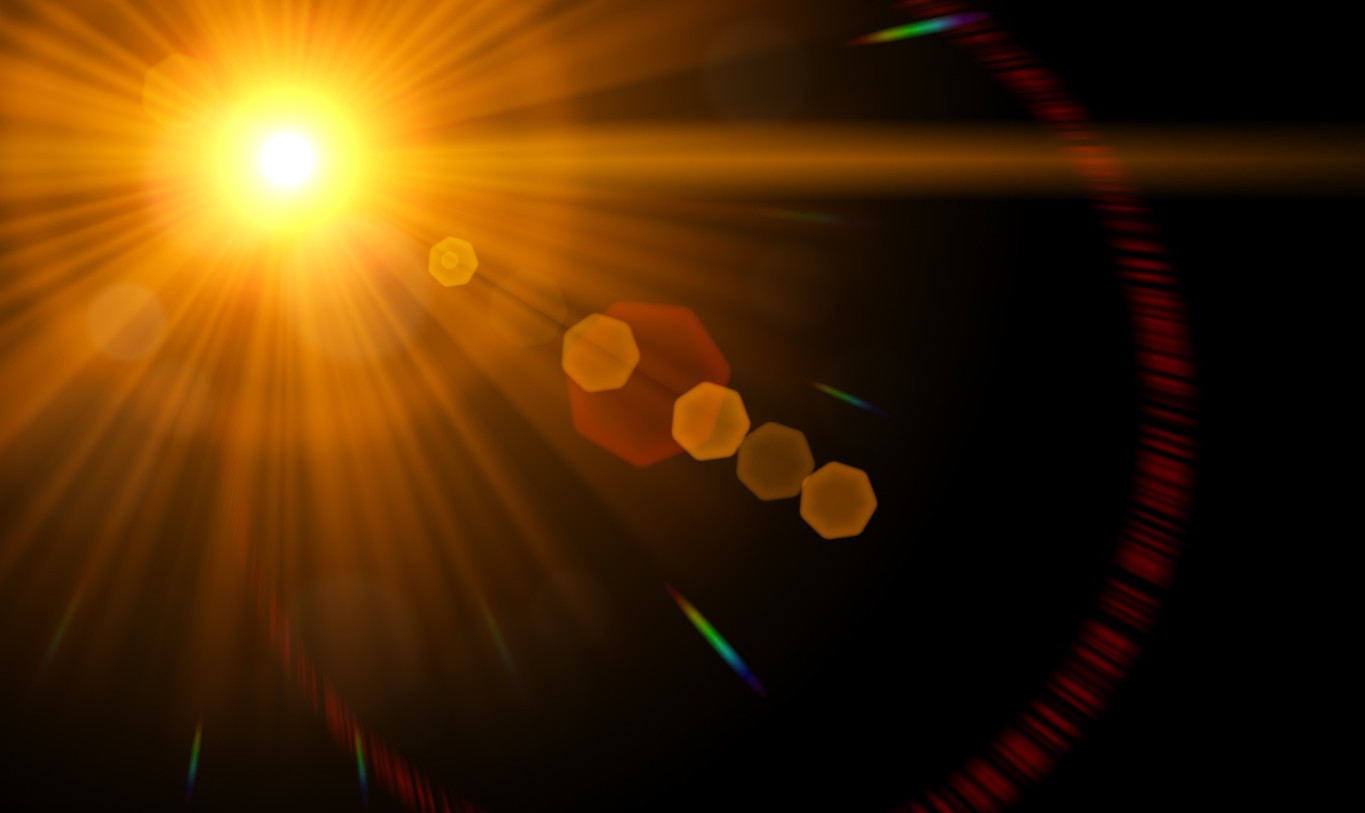Best Selling Products
Turn Lens Flare 'Incidents' Into Artistic Highlights
Nội dung
Lens Flare is an unwanted light phenomenon that occurs when a strong light source, such as sunlight, shines directly into the camera lens. The light is scattered inside the lens structure, creating streaks, circles, or shimmering spots in the image.

Today, we will explore an interesting phenomenon in photography – Lens Flare. You may have taken a photo in bright light conditions, such as when the sun is shining directly on the lens, and suddenly noticed streaks, circles or bright spots appearing in the photo. Instead of considering it an “accident”, let’s learn how to use this phenomenon as a creative tool, contributing to enriching your photo collection!
1. Learn the basic concept of Lens Flare
If you’ve ever taken a photo in bright light – especially when a light source like the sun is shining directly into your lens – you’re probably familiar with lens flare. This is the phenomenon of light scattering inside the lens, creating unwanted streaks, halos, or bright spots in your photo.
Features of lens flare:
When bright light, such as sunlight, hits the lens directly, it creates shimmering light trails or halos. These effects can add a dreamy, magical feel to a photo if used intentionally.
.png)
One interesting thing about lens flare is that the effect is often inconsistent. The location, shape, and brightness of the flares can vary depending on the angle of the shot, the position of the light source, and the design of the lens. This means that each photo can have a different “look” of lens flare, creating a unique look.
Once you’ve taken the shot, it can be difficult to completely remove lens flares in post-production. But that’s not necessarily a bad thing – the naturalness of the effect opens up room for experimentation and creativity. Sometimes, the little “mistakes” are the personal mark, expressing the artist’s own personality and style.
2. Common Lens Flare errors
Lens Flare also comes in many different forms, which are divided into the following common types of errors:
Veiling: Lens Flare error often appears when the lens is pointed at a strong light source but does not adjust the angle in time, causing the light to overwhelm the details in the image. The typical sign of Veiling is that the image is blurry or opaque. The light almost covers most of the image composition, making the lines unclear and the contrast low.
.png)
Ghosting: Ghosting defects appear as bright streaks or polygons on the image. These streaks and polygons can partially or completely obscure the details in the captured image.
.png)
Red dot/Sensor: Red dot/Sensor errors appear as red dots or red streaks on the image. This is also a very common error, especially with digital cameras and mirrorless cameras.
.png)
3. The effects of Lens Flare in photography
Although it is a technical error, Lens Flare can also become an effect to make photos more special and lively. Many photographers have intentionally created lens angles to appear Lens Flare to the extent allowed to create more realistic and soulful photos. Most viewers look for a sense of authenticity in the image. Photos that look like they are blurred by sunlight or are dimly lit may seem imperfect, but it is that imperfection that creates the most realistic feeling for the viewer.
Not stopping there, the Lens Flare effect also helps photographers convey emotions to viewers. Depending on the photographer's intention, Lens Flare can express brilliance, intensity, or gentleness, warmth in the photo. It can be said that this is a tool to convey emotions, a very artistic and unique form of visual language in the photography world.
.png)
4. How to control Lens Flare
Although useful in many cases, Lens Flare also brings trouble to many professional photographers. The point is that you need to know how to limit this technical error when necessary and control Lens Flare when needed. You can adjust the Lens Flare error by paying attention to the following factors:
Shooting angle: you should choose shooting angles that are not directed straight, directly at light sources such as the sun, lamps. If you want to create a Lens Flare effect, pay attention to the camera angle to get the desired lighting effect, try shooting from many angles to check the most suitable angle.
.png)
Lens: pay attention to cleaning the lens regularly and properly. Avoid the lens being too dirty due to dust, foreign objects or cleaning the lens with unsafe objects that can scratch the lens.
Lens structure: when choosing a camera, you should also learn about parameters such as focal length (the longer the lens, the more likely it is to have lens flare), number of lenses (the more the more likely it is to have flare), or lens design (is it coated with any material? Lens shape...).
Accessories: You can choose to buy some accessories to support photography and control Flare such as Filters, or Hood (lens cover) for the lens...
Lens flare – the phenomenon of light reflecting in the lens – is not only a “problem” that needs to be fixed, but also an opportunity for you to express yourself and be creative in photography. By understanding the causes of its formation, recognizing when it is harmful and knowing how to take advantage of this effect, you can completely turn each photo into a unique work of art.












































